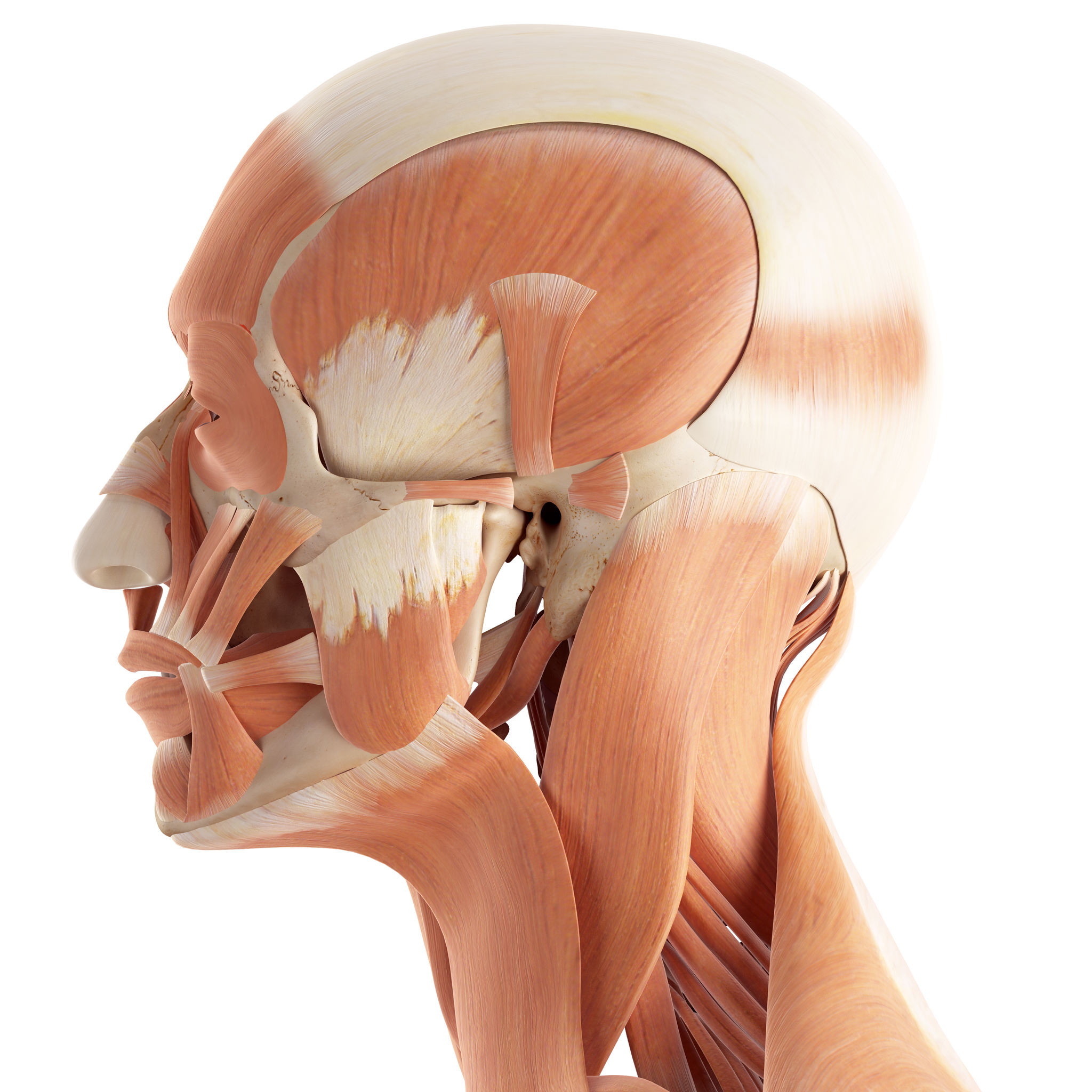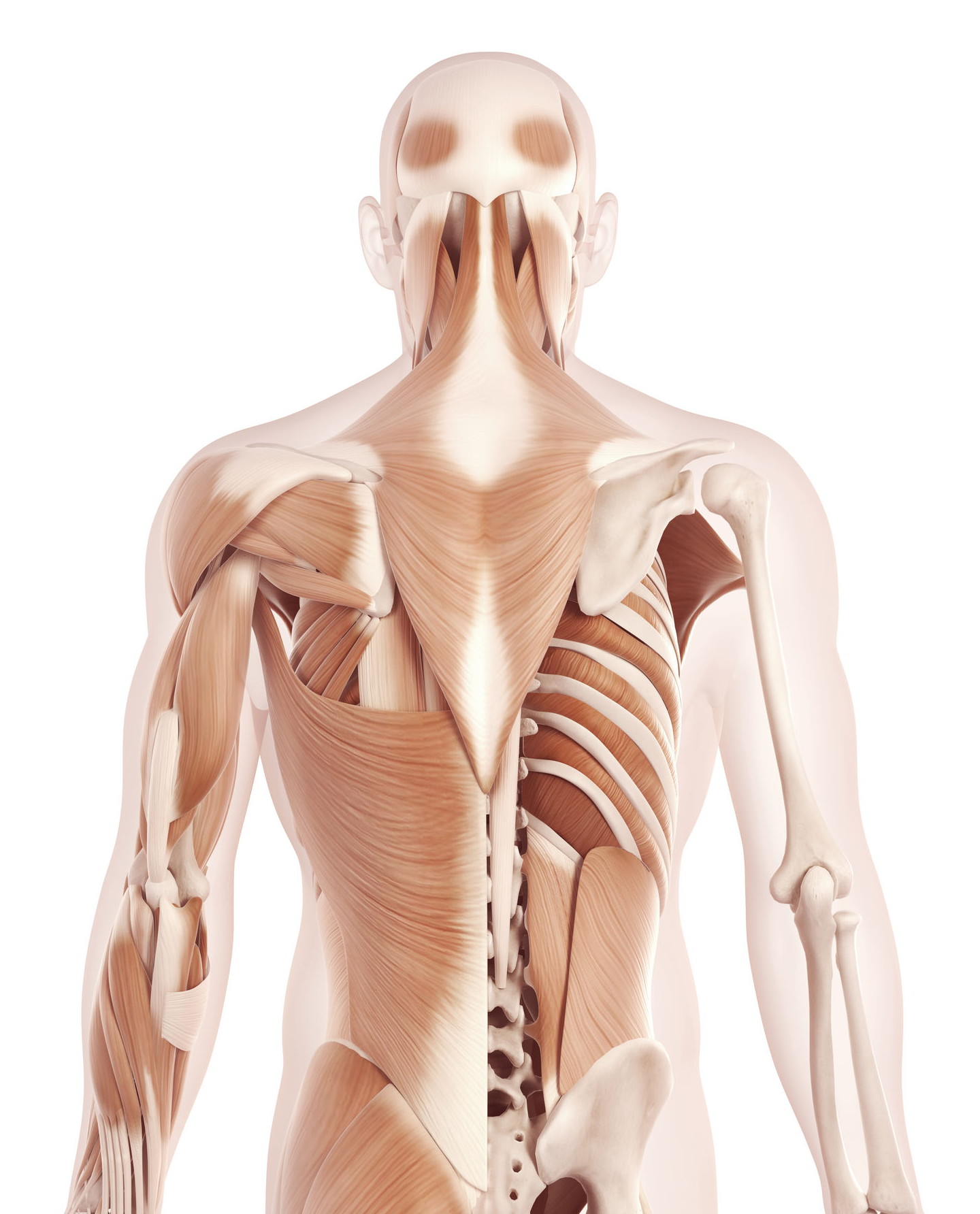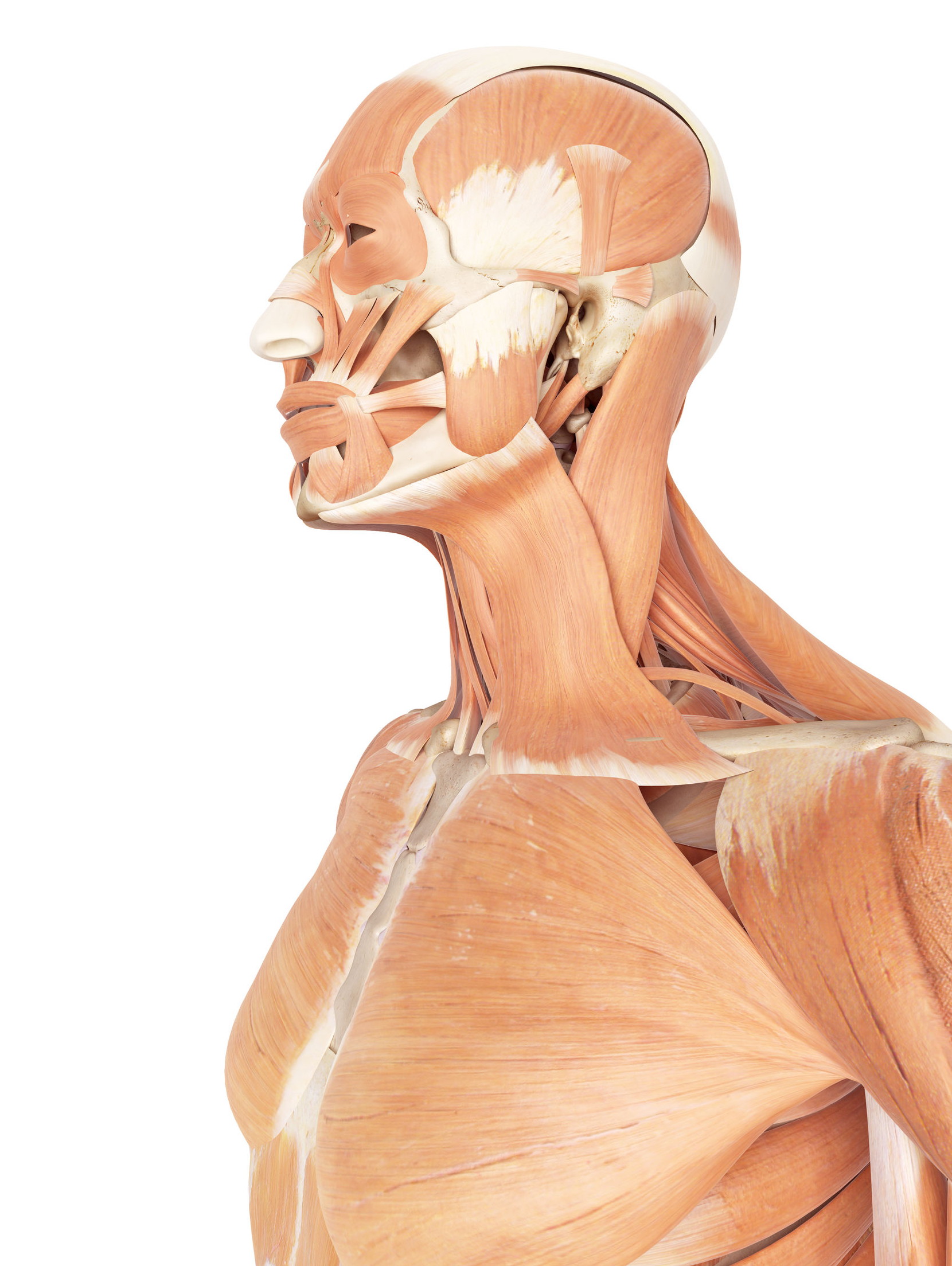La anatomía de su dolor de cabeza por tensión
If you’re reading this post, you may be one of the 45 million Americans who suffer from chronic headaches. Headaches are one of the most frustrating pain conditions because the causes are so varied and can seem completely mysterious. In fact, over 150 different types of headache have been established by the International Classification of Headache Disorders.
Se estima que el costo de las facturas médicas y las ausencias al trabajo relacionadas con los dolores de cabeza es de aproximadamente $ 50 mil millones por año en los EE. UU. Si podemos comenzar a controlar y eliminar nuestros dolores de cabeza, podríamos ahorrar mucho dinero, evitar tomar medicamentos y prevenir mucho dolor y sufrimiento.
En esta publicación, explicaré cómo la tensión muscular crónica en la cabeza, el cuello y la espalda puede causar y contribuir a los dolores de cabeza por tensión, y cómo puede aliviar sus dolores de cabeza al liberar esta tensión muscular y reducir su estrés.
“I have been taking the Level One online course and greatly enjoying it. I really look forward to my daily practice, and am quite amazed at how consistent I’ve been with it. I have done the exercises every day for a month, and have found great relief from my chronic headaches. Thank you so much for your program. It has been a huge gift in my life, and I have been telling others about it!”
¿Qué causa los dolores de cabeza?
According to the National Headache Foundation, 78% of all headaches are classified as tension headaches, which can be brought on by chronic muscle tension as well as stress, anxiety, or injury. Tension headaches typically feel dull and aching, as if a band is tightening around your head.
El segundo tipo de dolor de cabeza más común es la migraña, que causa un dolor intenso y suele presentarse junto con cambios en la visión o náuseas. Las migrañas pueden ser hereditarias; Se han identificado dos genes que están presentes en aproximadamente la mitad de los pacientes con migraña.
It’s believed that migraine headaches are brought on when the trigeminal nerve, the largest of the cranial nerves, releases irritating chemicals that cause blood vessels on the surface of the brain to swell. Migraine pain is often felt in the eyes or temples. Migraine headaches can be triggered by many controllable factors like lack of sleep, certain foods, missing a meal, stress, caffeine withdrawal, alcohol, and medications.
After tension and migraine, there’s a seemingly never-ending list of other causes of headaches: sinus pressure, viral infection, premenstrual symptoms, stroke, high blood pressure, dehydration, caffeine or sugar withdrawal, alcohol consumption, allergies, celiac disease, heavy metal poisoning, carbon monoxide poisoning, and brain conditions such as infection, tumor, and aneurysm.
In addition, medication-overuse or “rebound” headaches can occur when people take pain medication more than three times per week. Yes, that’s right—the exact medication that’s supposed to relieve your headaches can actually cause them.
There are no pain receptors in brain tissue itself, so headache pain is felt in areas surrounding the brain: the head and neck muscles, blood vessels, eyes, ears, sinuses, and the membrane lining the outer surface of the skull. And as you’ll learn in the next section, this is why tight muscles can cause tension headaches: by creating a great deal of pressure in the head.
Cómo la tensión muscular causa dolores de cabeza tensionales
Our muscles, tendons, ligaments, and bones create a complicated pulley system throughout our body. No part of our body moves independently; movement or tension in one part of the body always affects other parts of the body.
Entonces, comencemos por arriba. Hay un músculo llamado occipitofrontalis que comienza en las cejas, cubre la parte superior del cráneo y se inserta en el hueso occipital (la parte posterior e inferior del cráneo). Este músculo levanta las cejas y arruga la frente.
When the occipitofrontalis is tight, a great deal of pressure is created in the head. But tension within this muscle isn’t the only thing that makes it tight. Muscles in the neck that attach to the occipital bone—the upper trapezius, sternocleidomastoid, suboccipitals, semispinalis capitis, and splenius capitis—can pull downward, creating tension in the occipitofrontalis and pressure in the head.


De hecho, la tensión en cualquiera de los músculos del cuello y la espalda, como el grupo erector de la columna, el grupo transversospinal, el trapecio medio e inferior, e incluso el cuadrado lumbar, creará un tirón hacia abajo que puede contribuir a su dolor de cabeza por tensión.
Hemos estado hablando de la parte posterior del cuerpo hasta ahora, pero ahora hablemos de cómo los músculos de la cara y la parte delantera del cuello pueden crear la misma tensión, presión y tirón hacia abajo.
Hay 43 músculos en nuestra cara que trabajan para cerrar los ojos, sonreír y fruncir el ceño, y crear una cantidad infinita de expresiones faciales sutiles. Nuestras emociones se expresan inmediata y constantemente a través de nuestros músculos faciales; se necesita un esfuerzo consciente para mantenerlos relajados y nuestro rostro sin emociones.
Over time, as a result of many contractions, our facial muscles build up chronic tension. This tightness can cause wrinkles, imbalances in our face, and of course, the pressure of a tension headache.
Los músculos que mueven la mandíbula (temporal, masetero y pterigoideo) pueden tensarse mucho como resultado del estrés y crear tensión en la red de músculos y tejido conectivo que recubre el cráneo.
Moving downward again, muscles in the neck including the sternocleidomastoid and scalenes flex the head and neck forward. If you spend a lot of time at a computer, looking down at your phone, or driving, these muscles are likely tight and could be contributing to the pressure of your tension headache.

¿Por qué desarrollamos tensión muscular crónica?
To keep it simple, there are two main reasons why we build up chronic muscle tension. One is our repetitive daily activities, like our posture as we sit at our desk and the type of exercise that we do. Over time, we tend to build up residual muscle tension in the muscles that we use to do these repetitive postures or movements. This residual muscle tension is a negative effect of developing muscle memory, which you can read more about in this post.
The other main reason we build up chronic muscle tension is stress. We all react to stress in different ways, but one unavoidable physiological response to stress is increased muscle tension. If you experience regular headaches and suspect stress to be part of the reason why, please read The Life-Changing Link Between Anxiety and Muscle Tension.
Cómo Somática Clínica libera la tensión muscular crónica
Clinical Somatics is a groundbreaking method of neuromuscular education that releases chronic muscle tension using the technique of pandiculation.
Pandiculation resets the resting level of muscle tension through gentle movements that send accurate biofeedback to the nervous system. Since this process retrains the nervous system and actually changes the messages that your brain is sending to your muscles to stay tight, the results last much longer than when you temporarily release your muscles with massage or stretching.
Clinical Somatics exercises are taught in hands-on lessons and group classes, and you can also learn them on your own at home.
Cómo averiguar la causa de sus dolores de cabeza
Si padece dolores de cabeza crónicos, será de gran ayuda tanto para usted como para su médico si comienza a llevar un diario de los dolores de cabeza.
Dedique unas semanas a escribir todo lo que come y bebe, sus patrones de sueño, hábitos de ejercicio y fuentes de estrés. Registre todo sobre los dolores de cabeza que experimenta: cuándo aparecen, cuánto duran y cómo se sienten.
Notice if your muscles tend to get more tense when you feel stressed out. Also, notice where in your body you tend to get tight, and notice if an increase in your muscle tension tends to coincide with your headaches.
Observe si las actividades relajantes, como sumergirse en un jacuzzi o irse de vacaciones, reducen los síntomas del dolor de cabeza. Si lo hacen, es probable que la tensión muscular y el estrés contribuyan a sus dolores de cabeza.
You’ll likely have to go through a process of experimentation and elimination to discover which factor or factors are causing your headaches. While it might take some time, it’s worth it. Just because headaches are common doesn’t mean you have to live with them.
The most effective Clinical Somatics exercises for relieving tension headaches
If you are interested in learning Clinical Somatics exercises, the best way to start is with the Level One & Two Courses. These online courses teach Clinical Somatics exercises that release chronic tension throughout the body. The exercises are slow, gentle and suitable for people of all ages and physical abilities.
The following exercises from the Level One & Two Courses are the most effective exercises for releasing the tight muscles that can cause tension headaches.
Curso de Nivel Uno
Arch & Flatten: This exercise allows you to release and regain control of the lower back and abdominal muscles, improving the alignment of the pelvis and lower back.
Back Lift: This exercise is practiced lying on the stomach, allowing you to most effectively pandiculate the muscles on the back side of your body. When first practicing this exercise, the increase in blood flow may cause a temporary mild headache. This will stop occuring as your muscles release and you get accustomed to this exercise. You can skip it if you need do, just do elements of it, or practice it as a micromovement.
Arch & Curl: This exercise releases the abdominal, chest, and neck muscles.
One-Sided Arch & Curl and Diagonal Arch & Curl: Like the Arch & Curl, these exercises release the abdominal, chest, and neck muscles. They focus on one side of your body at a time, allowing you to address imbalances in your muscular patterns.
Iliopsoas Release: This is an important exercise for everyone to do regularly, as most of us hold unnecessary tension in our iliopsoas. Tension in the iliopsoas causes tension in the lower back, which can lead to tension in the upper back, neck, and shoulders.
Washcloth: This exercise involves a twisting movement of the shoulder girdle along with rotation of the entire spine; it is a wonderful release for the neck, shoulders, back, and waist muscles. You can practice the upper body part of the exercise on its own to focus on releasing neck and shoulder tension.
Flowering Arch & Curl: This is a bigger, full-body version of the Arch & Curl. It has the added benefit of releasing internal rotation of the shoulders. You can practice the upper body part of the exercise on its own to focus on releasing neck and shoulder tension.
Curso de Nivel Dos
Head Lifts: This exercise works directly with releasing the muscles that pull the head forward, including the sternocleidomastoid and anterior scalene.
Proprioceptive Exercise 1: This is a seated exercise practiced in front of a mirror, allowing you to retrain your posture and proprioception.
Scapula Scoops 1 & 2: These exercises release the upper and middle trapezius, rhomboids, and pectorals.
Face & Jaw Exercises: These exercises release the muscles of the face and jaw, which are often tight in people who suffer from headaches.

